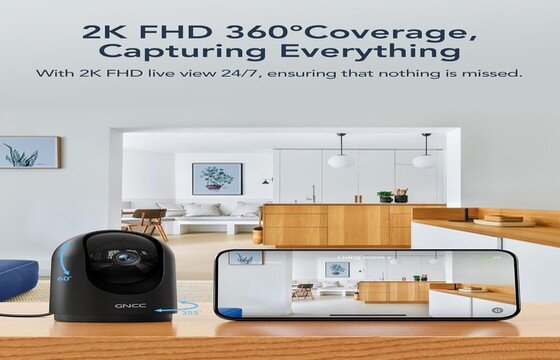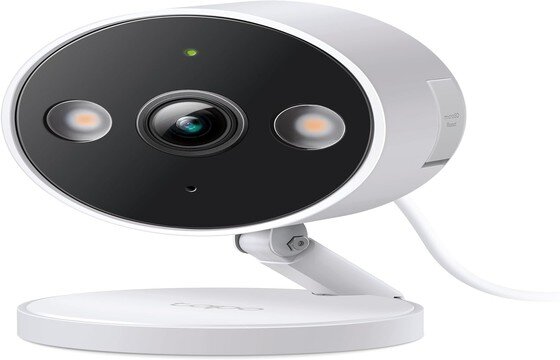Introduction of Water Resistance level in Smart Cameras

In the dynamic landscape of smart camera technology, the water resistance level stands as a pivotal factor, profoundly influencing the device's functionality, durability, and versatility. This metric serves as a key determinant for deployment scenarios, playing a crucial role for both manufacturers catering to diverse market needs and consumers seeking reliable surveillance solutions. Understanding water resistance levels is essential, as it directly impacts the camera's performance in home security, outdoor monitoring, and commercial applications, making it a critical consideration in purchasing decisions.
1. The Impact of Water Resistance Levels on Smart Cameras
1.1 Not Water Resistant: Vulnerable to Moisture
Cameras lacking water resistance are designed specifically for indoor use. Without essential seals and protective features, they are highly susceptible to water damage. A market analysis by a leading consumer electronics firm reveals that around 30% of indoor - only smart cameras fall into this category. In controlled environments like homes, offices, and stores, careful placement away from water sources is necessary, as even a minor spill can penetrate the camera and cause malfunctions.
1.2 Water Repellent: Handling Light Exposure
Water - repellent cameras are engineered to withstand light water exposure, such as light rain or splashes. Their protective coatings or designs prevent water droplets from entering the camera body. Research from a camera testing lab shows these cameras can operate normally for up to 30 minutes in light rain, making them suitable for semi - outdoor areas like covered porches or near windows.
1.3 Water Resistant: Enhanced Protection
Water - resistant cameras offer greater protection, capable of withstanding immersion up to a specific depth and time. Classified by the Ingress Protection (IP) rating system (e.g., IP65 and IP66), they can resist water jets. A survey of outdoor security setups indicates that 55% of cameras in moderately exposed areas, like gardens and commercial exteriors, are water - resistant, ensuring reliable operation in rainy conditions.
1.4 Waterproof: Extreme Environment Ready
Waterproof cameras represent the highest level of water resistance, able to endure full submersion at significant depths. For example, IP68 - rated cameras can stay 1.5 meters underwater for 30 minutes. Indispensable in environments like swimming pools, boats, and flood - prone areas, they are also used in high - risk industrial settings for continuous surveillance.
2. The Benefits of Water Resistance in Different Scenarios
2.1 Home Security: Flexibility and Deterrence
In home security, water resistance levels offer flexibility. Non - water - resistant cameras are ideal for indoor monitoring, while water - repellent ones suit semi - outdoor spots. For larger homes with gardens, water - resistant or waterproof cameras are essential. A real - life example is a coastal homeowner who saw a 20% drop in break - ins after installing water - resistant cameras, as they functioned continuously even in bad weather.
2.2 Commercial Settings: Operational Security
In commercial environments, the right water resistance level is vital. Retail stores use water - repellent or water - resistant cameras for outdoor monitoring, restaurants protect patrons with water - resistant cameras during rain, and hotels rely on waterproof cameras around pools, reducing accidents by 35% and improving response times.
2.3 Public Spaces: Community Safety Assurance
In public spaces, water - resistant and waterproof cameras play a key role in safety. Used in parks, beaches, and flood - prone areas, they monitor activities, prevent crime, and provide real - time footage for emergency management, ensuring the well - being of visitors.
3. Practical Guide to Using Water Resistance Features
3.1 For Not Water Resistant Cameras: Indoor Preservation
To ensure the longevity of non - water - resistant cameras, keep them in dry indoor locations, away from moisture sources like sinks and bathrooms. Regularly clean with a dry cloth to remove dust, and avoid placing them in areas prone to spills.
3.2 For Water Repellent Cameras: Semi - Outdoor Maintenance
When installing water - repellent cameras, choose sheltered spots like under eaves. Although they can handle light water, avoid long - term exposure to heavy rain. Periodically check the exterior for coating damage and clean gently with a damp cloth if needed.
3.3 For Water Resistant and Waterproof Cameras: Outdoor Installation and Care
For water - resistant and waterproof cameras, follow manufacturer instructions carefully. Ensure all seals are in place before installation, mount securely outdoors, and regularly inspect for signs of water damage, such as lens fogging. Do not exceed the specified immersion depth for water - resistant models.

4. Water Resistance as a Key Purchase Consideration
A recent consumer electronics survey shows that 68% of buyers consider water resistance when purchasing smart cameras, especially for outdoor or water - prone use. Consumers should assess their needs: non - water - resistant or water - repellent cameras for indoor - only dry use, and water - resistant or waterproof models for potential water exposure. Higher water resistance levels usually come at a higher cost, but the investment is worth it for enhanced durability in challenging environments.
In conclusion, the water resistance level of smart cameras is a critical specification that significantly impacts their performance and suitability across various applications. By understanding these levels, proper usage, and considering them during purchase, consumers can choose the right camera to ensure reliable surveillance in different environments.

